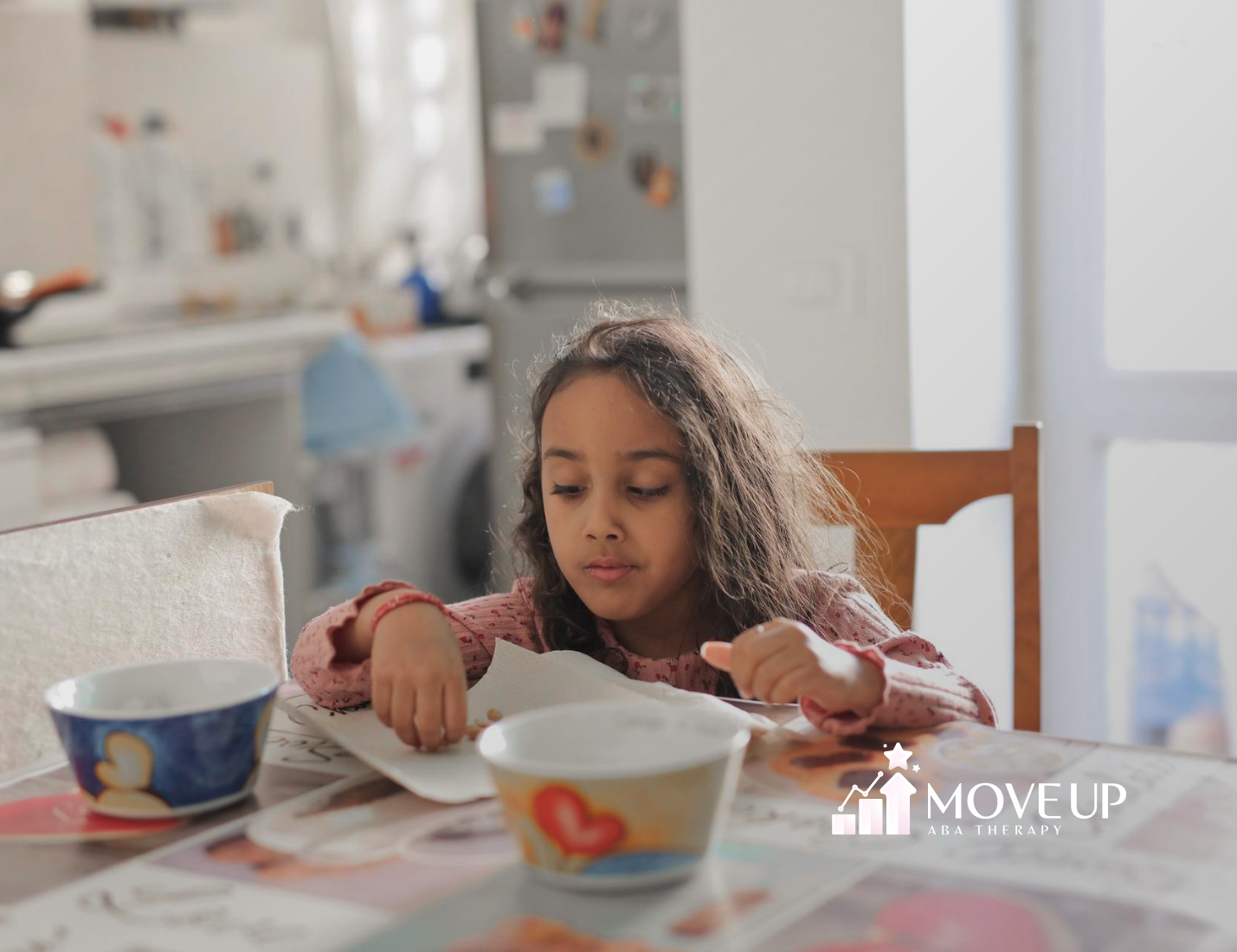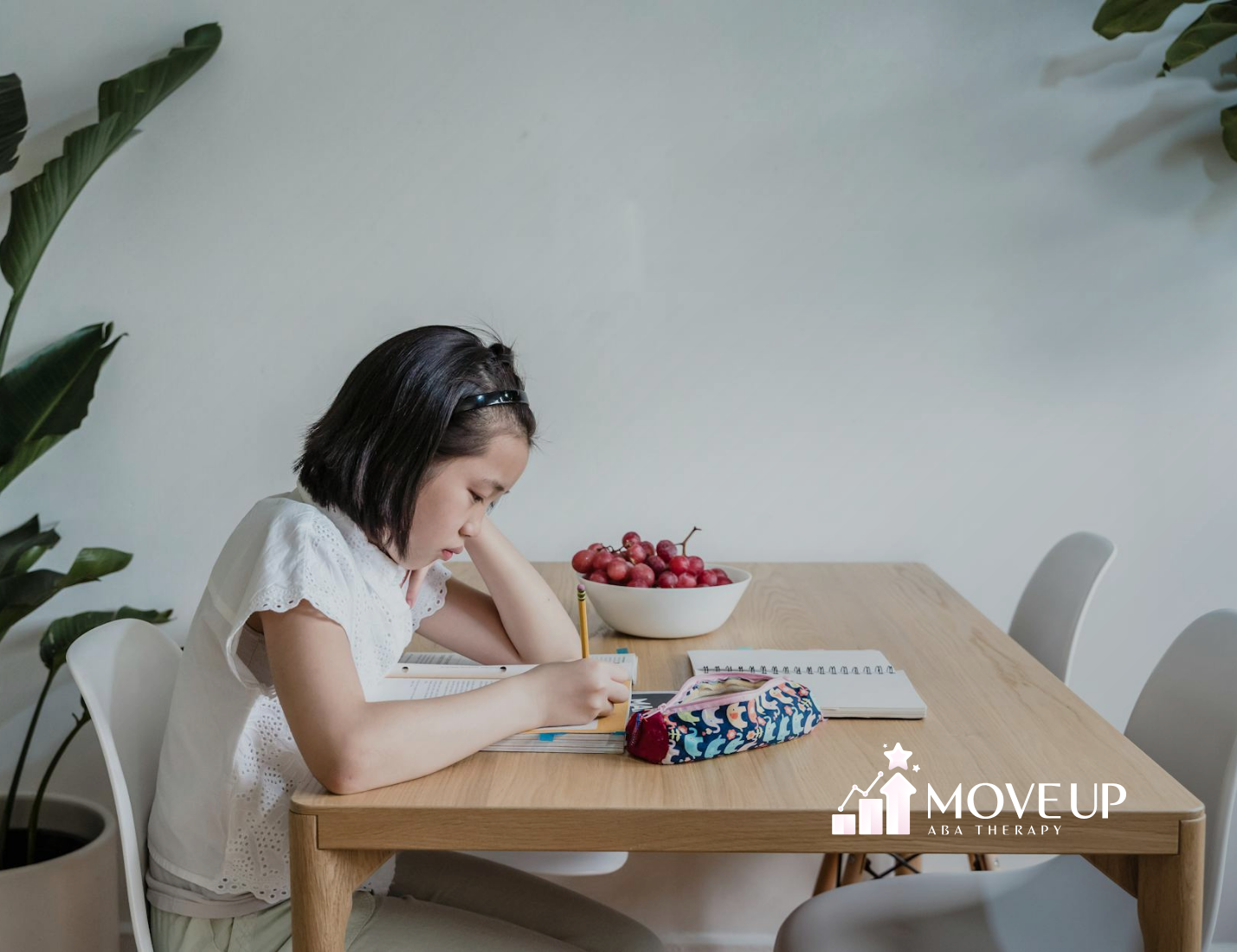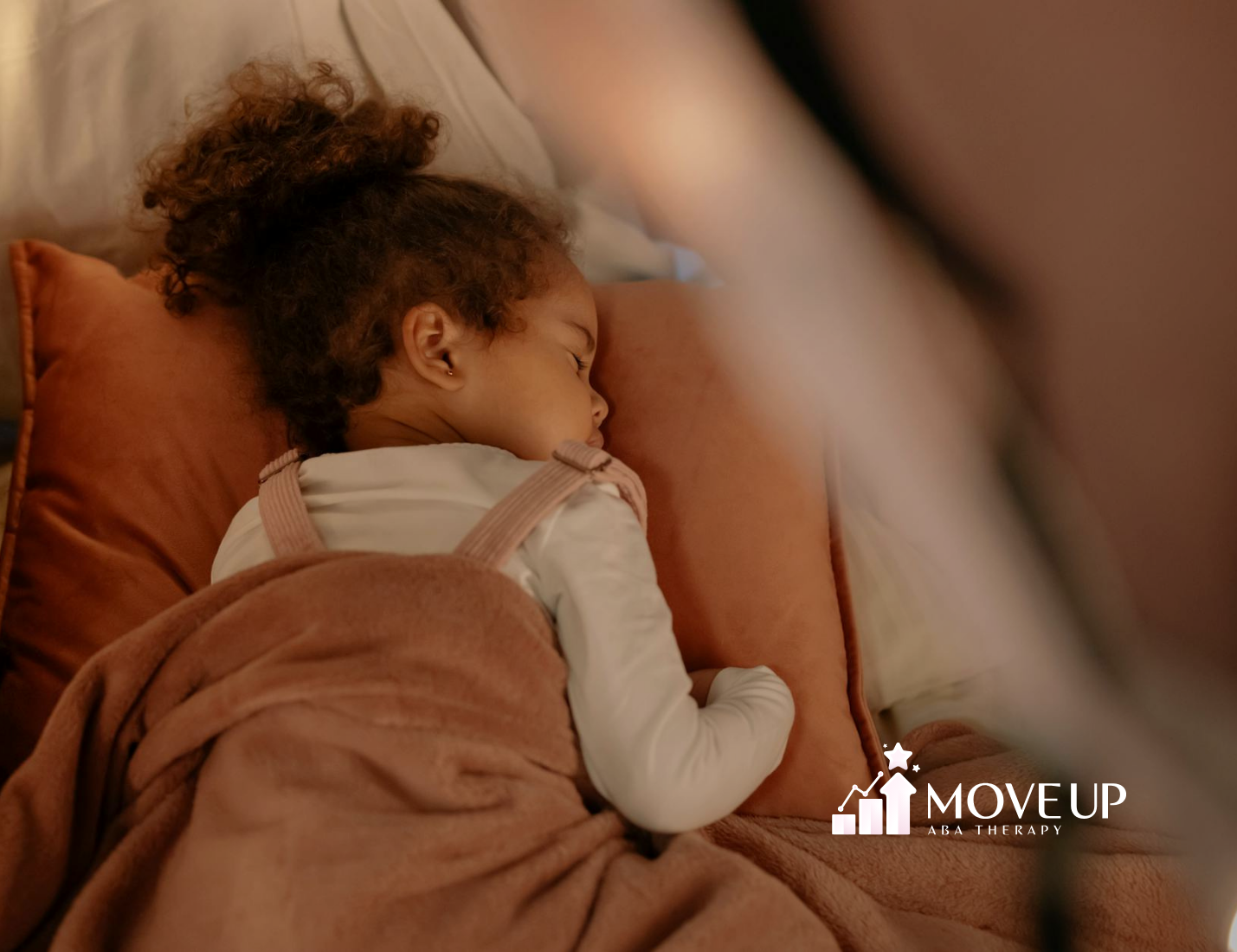Key Highlights
- Activities of daily living (ADLs) are very important when you teach autistic children life skills like personal hygiene, dressing, and eating.
- Daily living activities help kids feel more confident, become independent, and improve how they handle day-to-day changes. This can make their quality of life better and means they do not need their caregivers as much.
- Using visual aids and schedules helps make daily routines easy to follow. It gives tasks more order and makes everyday activities simpler.
- Occupational therapy can help with things like sensory problems and motor skills during these daily activities.
- Task analysis, giving positive feedback, and having a helpful space support success in ABA therapy when building ADL skills.
Daily living skills are crucial for children with autism spectrum disorder. Activities of Daily Living (ADLs) like dressing, eating, and grooming help these children navigate routines with confidence and independence. By incorporating ADLs into daily schedules, caregivers and teachers can foster life skills essential for self-sufficiency and adaptive behavior. This blog explores effective methods to teach ADLs, discusses challenges, and offers strategies to empower autistic children for a brighter, more independent future.
Understanding ADLs in the Context of Autism
Activities of daily living are routine tasks that many do automatically, but autistic children often require additional support to master these skills. With the right guidance, they can improve their adaptive behavior, gain confidence, and learn independence.
When caregivers prioritize daily living skills, children feel a sense of accomplishment, facilitating their participation in the community. Essential skills like dressing and preparing simple meals also ease the transition to adulthood and enhance overall quality of life.
What Are Activities of Daily Living (ADLs)?
Activities of daily living are the things people need to do each day, like bathing, dressing, eating, and using the toilet. These are simple self-care tasks that help with personal hygiene. When autistic children learn and do these daily living activities, it helps them be more independent. It also helps them feel good about themselves and manage their daily routines better. This is good for their growth and how they get through each day.
Why ADLs Matter for Autistic Children
ADLs, or daily living activities, are crucial for autistic children. Learning these skills fosters independence, reducing reliance on caregivers while boosting confidence in managing everyday tasks and building good habits.
Acquiring skills like personal hygiene and meal preparation enhances self-esteem and encourages children to explore new experiences. Success in ADLs also promotes community engagement.
Focusing on ADL skills prepares children for the future, making adulthood feel more manageable. Early instruction from caregivers equips autistic children with the confidence and resilience needed for a better quality of life in the long run.
Key Categories of ADL Skills
ADLs cover many life skills that you need to perform daily tasks. The main ADL areas are personal hygiene, dressing, eating, and getting around. Each one is important for being independent.
For autistic children, life skills like these are very helpful, especially if they have a hard time with how things feel or moving their bodies. ADLs give them a set way to learn and practice. Building these skills helps them rely less on others. It also helps them join in more with other people and activities in their community and gives them a better quality of life.
Personal Hygiene and Grooming Tasks
Personal hygiene is crucial for good health, but it can be challenging for autistic children due to sensitivities to sounds, smells, and touches. Here are some strategies to simplify personal care:
- Break tasks into small steps using task analysis. Start with washing hands, then progress to brushing teeth.
- Use visual aids like picture schedules to clearly outline each step of the hygiene routine.
- Provide gentle tools and products, such as an electric toothbrush for a softer feel or unscented soap for those sensitive to strong smells.
An occupational therapist can offer tailored grooming tips that address your child’s sensory needs. Many therapists recommend incorporating personal care into a consistent daily schedule, which helps reduce anxiety and fosters good habits. With time, support, and a clear routine, autistic children can master essential hygiene skills.
Dressing and Clothing Independence
Learning how to dress on their own is a big step for autistic children. But it can be hard because some have trouble with movement, and some get upset by how clothes feel. Using the right plans and tools can help them with this.
Visual schedules that show every step of getting dressed, like picking out what to wear, putting on shirts, or buttoning up, give simple help. Soft and comfortable clothes are good because they make it easier for children to stay calm and get the task done.
Other things, like brushing hair or zipping up a jacket, can be done for practice when things are calm. Giving praise also helps a lot. If you do this training again and again, and use the right tools, children get better at putting on their clothes. This helps them get greater independence and puts them in charge of their daily routines.
Eating, Feeding, and Mealtime Skills
Mealtime skills help autistic children gain independence in daily activities. While challenges exist, tailored strategies can ease the process.
| Strategy | Approach |
|---|---|
| Visual Schedules | Use picture guides for meal preparation steps, like setting the table. |
| Special Utensils | Provide adaptive tools, such as weighted utensils, to improve coordination. |
| Food Exploration | Gradually introduce new textures and flavors to lessen sensory discomfort. |
Engaging children in simple cooking tasks, like peeling fruits or arranging ingredients, develops motor skills and fosters adaptive behavior. Mealtime routines can become enjoyable opportunities for building confidence in personal care and daily living skills.
Building a Strong Foundation for ADL Success
A strong base for daily living starts when you help children with small, easy routines. You should let them try new skills over time. This slow way to learn helps to build executive function. When kids do tasks again and again, they get better and feel more in control.
You should train kids based on their ability. Use things like task schedules and give simple spoken hints when needed. When you make good plans, you help your child grow. This gives them more chances to do well on their own in daily living as they get older.
Establishing Consistent Routines
Structured daily routines provide comfort for autistic children, as they thrive on familiarity. Breaking tasks into simple steps reduces anxiety and promotes smoother execution.
Parents can create schedules that incorporate essential routines like grooming, dressing, and mealtime. Visual aids or timers can help children track their activities, keeping them engaged.
Flexibility in routines is also beneficial, allowing adjustments as your child grows or learns new skills. You can simplify tasks or introduce new challenges at the right time.
Creating a Supportive Home Environment
A supportive home helps autistic children learn daily skills more effectively by minimizing challenges. Safety and encouragement are crucial for their development.
Here’s how to create a conducive environment:
- Designate quiet areas for breaks from noise or bright lights.
- Offer practical tools, like easy-to-wear clothing.
- Set achievable goals, and small successes boost motivation.
By aligning your home with your child’s abilities and needs, you foster their engagement and promote strong skill development.
Effective Strategies for Teaching ADLs
Teaching daily living skills to autistic children needs a clear plan to help them make steady progress. Methods like task analysis, visual schedules, and rewards can make hard tasks easier for children. When we break down activities into small, simple steps, it helps children stay focused.
Visual aids give children clear directions. Motivational tools help reward them for their efforts. This way, children start to connect doing their daily living tasks with good feelings. Using the right steps, learning daily living skills can be fun and helpful for autistic children.
Task Analysis and Step-by-Step Instruction
Task analysis simplifies learning daily routines by breaking complex tasks into manageable steps. For instance, brushing teeth can be divided into picking toothpaste, applying it to the brush, and brushing all areas.
Caregivers can choose teaching methods that suit the child best. Some may use forward chaining, assisting with each step sequentially, while others might opt for backward chaining, allowing children to complete the final step first for immediate satisfaction.
This approach helps children learn gradually, boosting their confidence in daily routines.
The Power of Visual Supports and Schedules
Visual supports, such as picture schedules, simplify daily activities for autistic children by providing a clear step-by-step guide. This reduces confusion and enhances clarity during routines.
- Morning schedules outline tasks like brushing teeth and getting dressed.
- Color-coded charts help manage time effectively.
- Photos and timers keep children focused and on pace.
Using visual schedules clarifies what comes next, boosting task comprehension and daily completion. For many autistic children, this fosters routine, making daily activities less stressful and more manageable.
Using Reinforcement and Motivational Tools
Positive reinforcement encourages children to learn new skills by linking their efforts to rewards. For daily routines, use praise, stickers, or activity privileges to boost motivation.
Reinforcement should be immediate after a child completes a task or shows progress. In ABA therapy, motivational tools ensure that skills are retained, providing consistent encouragement for daily routines.
This clear approach builds children’s confidence and transforms simple tasks into achievements that foster greater independence.
Addressing Common Challenges in ADL Training
Teaching ADLs to autistic children needs you to look at things like sensory issues and talking problems. You have to work on these challenges in a step-by-step way. Do not give the child too much at one time.
You can help by making the space calm or making it work better for their needs. This helps lower stress when doing daily tasks. At the same time, speech and job therapists can use special methods or tools. These make it easier for the child to pick up new skills.
Supporting Sensory Needs During Everyday Tasks
Many autistic children struggle with sensory sensitivities to light, sound, and touch, making daily routines challenging. Modifying sounds, lighting, or textures can help them manage these tasks more comfortably.
For instance, using soft lighting or reducing noise can ease their anxiety during hygiene activities. Gradually introducing new sensations within these routines allows them to adapt over time.
These adjustments enable autistic children to navigate overwhelming environments and enhance their daily functioning.
Overcoming Communication Barriers
Helping autistic children communicate better can make it easier for them to take part in daily activities. Using visual aids like picture cards gives clear hints about each task.
Doing social exercises again and again helps them get used to new things. When you explain the steps often, you keep things clear and stay patient. Over time, these steady routines or working with a professional can help build trust and make things work for both you and the child. This gives you better results, helps with speech, and helps everyone adjust with daily feedback and teamwork.
Managing Behavioral Challenges
Behavior challenges can make life difficult for autistic individuals, often triggered by specific stimuli. Developing strategies to help them stay calm is essential. A clear plan utilizing personalized calming techniques can prevent or reduce issues like seizures or anxiety.
It’s vital to help them focus and relax when needed. Providing structured steps helps guide their actions. Additionally, strong support for mental well-being and daily routines is crucial.
Collaborating with Therapists and Educators
A strong partnership between therapists and teachers significantly enhances the daily living skills of autistic children. By employing tailored task analysis and strategies, they address each child’s unique needs. Visual aids, such as picture schedules, promote understanding and foster independence in daily routines. Consistent communication keeps the team aligned on the child’s goals, encouraging adaptive behavior and cognitive growth, ultimately leading to a better quality of life.
Incorporating ABA Principles into Daily Life
Using ABA ideas in everyday life helps autistic children get better at daily living and life skills. Positive reinforcement can be used to encourage good behaviors. Task analysis helps by breaking hard things into smaller steps, making it easier for them to learn. Visual aids and picture schedules are helpful for cognitive development and let children move through different social situations with more ease.
When families add structured routines to everyday tasks like meal preparation and personal care, they can help kids gain greater independence and show more adaptive behavior. This way, children learn the life skills they need. It makes their quality of life better.
Conclusion
Helping autistic children build daily living skills takes teamwork. When parents, therapists, and teachers work together using proven ABA strategies like positive reinforcement, task analysis, and visual supports, children gain more independence and confidence in everyday routines. These skills not only make daily life smoother, but they also prepare children to navigate social situations and handle new challenges more effectively.
At Move Up ABA, we focus on personalized, in-home therapy that supports your child’s unique learning style and goals. Our team is here to guide you every step of the way with strategies that work in real-life settings. Reach out to Move Up ABA today and discover how we can help your child build essential life skills for a brighter, more independent future.
Frequently Asked Questions
1. How can parents encourage independence in daily routines?
Parents can help kids become independent by dividing jobs into small steps. They can also use visual aids and give positive reinforcement. It is good to set up a structured space and routine. This gives children time to practice and build confidence. With time, kids get better at doing daily activities on their own.
2. What if my child resists participating in ADL tasks?
To help your child take part in ADL tasks, you can use visual schedules or tell social stories. Let them have some choices during the tasks. This helps them feel they have control. Start with easy steps and make things a bit more difficult as your child gets used to it. Keep giving positive reinforcement as you go. This can make them want to join in and not push back.
3. How can sensory sensitivities be managed during ADL activities?
To help manage sensory sensitivities during daily activities, you can set up a space that is simple and has few distractions. You may want to use tools like noise-canceling headphones. Try to include calming methods, too. Slowly help the child get used to different things that might bother them, and watch how they react. This way, you can find the best way for them to be comfortable.
Sources:
- https://pmc.ncbi.nlm.nih.gov/articles/PMC4912002/
- https://www.mayinstitute.org/news/acl/asd-and-dd-child-focused/helping-a-child-with-asd-develop-good-hygiene-habits/
- https://www.autismspeaks.org/sensory-issues
- https://www.autism.org.uk/advice-and-guidance/topics/about-autism/preference-for-order-predictability-or-routine
- https://autism.org/challenging-behaviors-and-autism/







